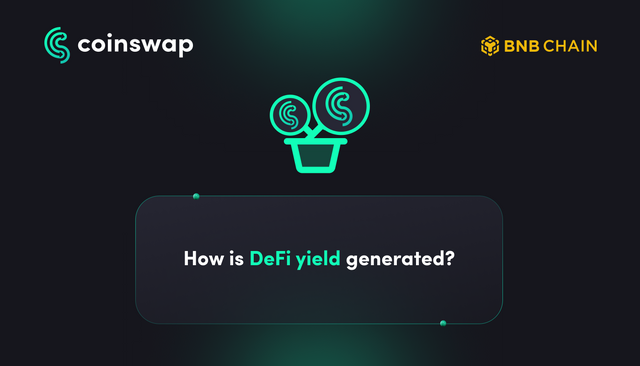Unveiling the Mechanism: How DeFi Generates Yield Through Smart Contracts and Innovation 🚀💰

DeFi (Decentralized Finance) has taken the financial world by storm, offering innovative ways to earn passive income through yield generation. 🚀💰 Yield farming, a central aspect of DeFi, has revolutionized how individuals can put their cryptocurrency holdings to work and earn returns. But how exactly is DeFi yield generated?
At its core, DeFi yield generation involves the utilization of smart contracts and automated protocols to earn interest or rewards on cryptocurrencies. Here's a closer look at how it works:
Liquidity Provision: 💧 One of the most common methods of generating DeFi yield is by providing liquidity to decentralized exchanges (DEXs). Users can contribute their cryptocurrency assets to liquidity pools, which facilitate trading on DEX platforms. In return for providing liquidity, users receive a portion of the trading fees collected on the platform. This yield is distributed proportionally based on the user's contribution to the pool.
Staking: 🌱 Staking involves holding and "locking up" a specific amount of a cryptocurrency within a network's staking mechanism. This helps secure the network and validate transactions. In return for participating in staking, users earn staking rewards in the form of additional tokens. The more tokens a user stakes, the higher their potential yield.
Yield Farming: 🌾 Yield farming involves moving assets between different DeFi protocols to maximize returns. Users can lend their cryptocurrencies to borrowing platforms and earn interest on their loans. Alternatively, they can supply their assets to liquidity pools and earn yield through trading fees and token rewards. Yield farmers often strategize and monitor different protocols to optimize their earnings.
Lending and Borrowing: 🏦 DeFi platforms enable users to lend their cryptocurrencies to borrowers, who provide collateral in exchange. Lenders earn interest on their loaned assets, while borrowers can access funds without needing traditional intermediaries like banks. This decentralized lending and borrowing system contributes to the overall yield generated within the DeFi ecosystem.
Yield Aggregators: 🔄 Yield aggregators are platforms that automatically optimize yield generation for users by moving their funds across different protocols. These platforms help users find the most lucrative opportunities and manage their DeFi investments more efficiently.
Synthetic Assets: 🛠️ Some DeFi protocols offer synthetic assets that mirror the price movements of real-world assets like stocks, commodities, or fiat currencies. Users can earn yield by trading or providing liquidity for these synthetic assets.
In conclusion, DeFi yield generation leverages innovative blockchain technology, smart contracts, and decentralized protocols to create opportunities for individuals to earn passive income on their cryptocurrency holdings. It provides a democratized and open-access way for users to participate in the global financial system, without relying on traditional intermediaries. However, it's important to note that while DeFi yield generation can be highly rewarding, it also carries risks, including smart contract vulnerabilities and market fluctuations. As with any investment, thorough research and caution are essential. ⚠️🔍